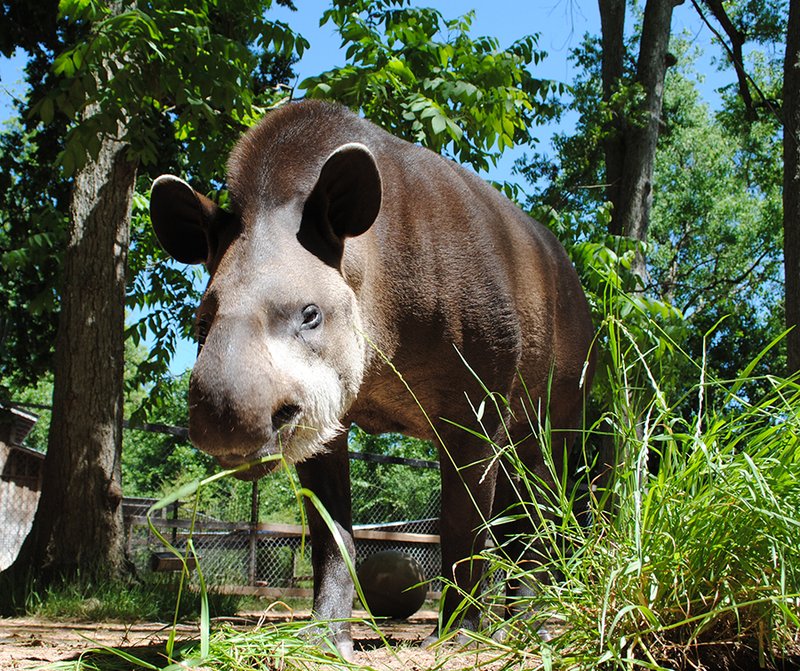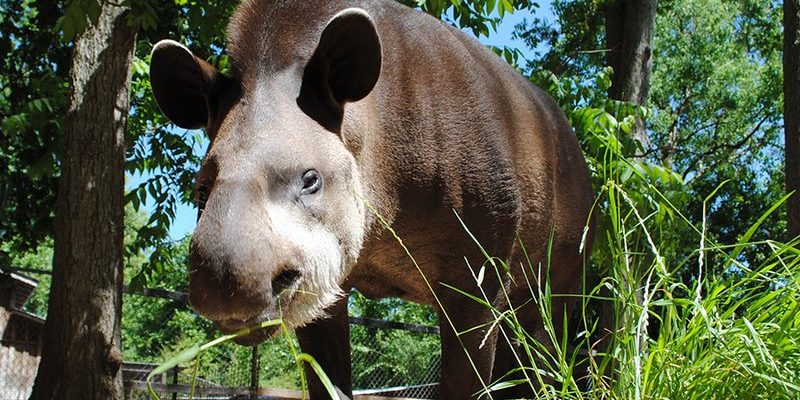
The Brazilian tapir isn’t just another interesting animal; it serves many purposes in the ecosystem. As a herbivore, it munches on various plants and fruits, leaving room for new growth. Think about how clearing out old weeds helps your garden thrive. In a similar way, tapirs help maintain the balance of their environment, ensuring that plant species can flourish. So, let’s dive deeper into the fascinating world of the Brazilian tapir and uncover why it’s so crucial to its ecosystem.
What Is a Brazilian Tapir?
The Brazilian tapir, also known as the South American tapir or Tapirus terrestris, is one of the largest land mammals in South America. It typically weighs between 500 to 800 pounds and can reach lengths of up to 8 feet. With its distinctive rounded body and long, flexible snout, it looks something like a cross between a pig and an elephant.
Tapirs are mostly nocturnal, which means they’re more active at night. During the day, they’re often found resting in the shade of trees or near water bodies. Their habitat includes tropical forests, savannas, and wetlands—essentially anywhere that provides enough vegetation for them to munch on.
They play a fascinating role in their ecosystem, which goes far beyond just being a food source for predators. They are primarily herbivores, which means they feed on a variety of leaves, fruits, and branches. This dietary habit makes them crucial for seed dispersal, helping different plant species thrive in their native habitats.
Seed Dispersal and Plant Diversity
Here’s the thing: when a tapir eats fruit, it doesn’t just enjoy a tasty snack—it also helps plants reproduce. As they move through the forest, they excrete seeds in different locations. This process is vital for maintaining plant diversity.
For example, consider the Brazil nut tree, which relies on tapirs and other animals for the spread of its seeds. When a tapir eats the fruit and passes the seeds, it helps ensure new trees can grow far from the parent plant. This can lead to a more diverse and resilient forest ecosystem.
Without tapirs, we might see a decline in certain plant species, which can dramatically affect the entire ecosystem. Fewer plants mean less food and shelter for other animals, creating a ripple effect throughout the habitat.
Maintaining the Balance of Ecosystems
The Brazilian tapir is often referred to as a “keystone species.” But what does that actually mean? In simple terms, a keystone species is one whose impact on its ecosystem is disproportionately large relative to its abundance. By munching on vegetation, tapirs help keep plant populations in check, preventing any single species from dominating the landscape.
Imagine an orchestra: if one musician plays too loudly or too softly, it disrupts the harmony. Tapirs help maintain that harmony in their environment. When their population is healthy, they ensure that a variety of plants coexist, which in turn supports a diverse array of animal species.
However, if tapir numbers decline—due to habitat loss or hunting—the entire ecosystem can suffer. It’s a critical reminder of how interconnected life is. Each species, no matter how small or seemingly insignificant, contributes to the greater tapestry of life.
Interactions with Other Wildlife
Tapirs don’t live in isolation; they share their habitat with an array of wildlife, forming a web of interactions. Birds, insects, and even larger mammals can all benefit from the presence of tapirs. For instance, when tapirs forage, they help disturb the ground, which can uncover food sources for smaller animals.
Additionally, their waste serves as fertilizer, enriching the soil and promoting plant growth. This not only benefits the plants that tapirs consume but also supports other herbivores that rely on those plants.
You might also notice that tapirs are often a food source for predators like jaguars and pumas. While this might seem harsh, it’s a natural part of the ecosystem. Predators regulate tapir populations, ensuring that the environment doesn’t become overrun.
Threats to Brazilian Tapirs
Unfortunately, Brazilian tapirs face significant challenges today. Habitat destruction due to deforestation, agriculture, and urban development poses a major threat to their survival. As forests are cleared, tapirs lose their homes and the rich environments they rely on.
On top of that, hunting remains a serious issue in some areas. Despite being protected in many regions, illegal poaching continues to threaten their numbers. If tapirs were to vanish from their habitats, the plant and animal communities that depend on them would quickly feel the impact.
Conservation efforts are essential to help protect tapirs and their environments. By educating communities about the importance of this species, we can foster a sense of stewardship and urgency to protect their habitats.
Conservation Efforts and What You Can Do
Many organizations are dedicated to the conservation of the Brazilian tapir and its habitat. Initiatives focus on habitat protection, restoring degraded areas, and raising awareness about the importance of tapirs in the ecosystem.
You might be wondering how you can make a difference. Simple actions can contribute to these efforts:
- Support conservation organizations: Consider donating to or volunteering with wildlife organizations that focus on tapir conservation.
- Spread the word: Educate others about the importance of tapirs and their role in the ecosystem.
- Promote sustainable practices: Encourage responsible land use and sustainable farming in regions where tapirs live.
Every small action counts and can help make a significant impact on conservation.
The Bigger Picture: Why Tapirs Matter
So, what’s the takeaway here? Brazilian tapirs, while not the flashiest animals, play an incredibly important role in their ecosystem. They help maintain plant diversity and create a balanced environment, supporting a range of species, including ourselves.
By protecting tapirs, we’re not just saving a single species; we’re preserving a whole ecosystem. Every creature, big or small, contributes to the health of our planet. And in a world facing so many environmental challenges, it’s critical to understand and appreciate the roles that each of these species plays.
In summary, the Brazilian tapir’s role is a reminder of our shared responsibility to protect the natural world. By valuing the unique contributions of every animal, we can work together to ensure a thriving planet for generations to come.

